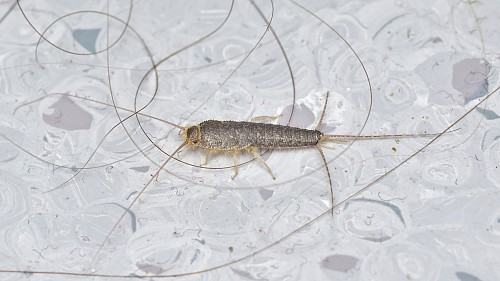Silverfish: Some Prevention Tips
Chances are good you’ve spotted a silverfish in your home at some point. If so, you probably wondered, “What are these fast-moving little pests and why do they often invade our homes?” As opposed to insects that carry germs (like roaches) or bite (spiders, for instance), silverfish don't pose any health risk to humans. Rather, these pesky creatures are infamous for causing damage to fabrics and other materials around the house, such as paper. So if you see these critters around your home, use the following tips to get rid of them.
What are Silverfish?
Silverfish are small (about 1/2 to 1 inch long) shiny gray or silver bugs. These wingless insects are named for their color and their wriggling fishlike movements. While not poisonous or otherwise harmful to human beings or animals, a silverfish infestation can be quite destructive to possessions like your prized home library … the old-fashioned kind, not your Kindle version.
Where do Silverfish Come from?
Silverfish are most active at night in empty areas. They’re attracted to starch and sugar, which means that they gravitate toward materials containing these substances, including the silverfish favorite: books and newspapers. Book bindings, which contain starchy glue, are a common place to find silverfish -- especially those of books that have not been used for a long while. Where else do silverfish like to hang out?
- Dark and damp areas (think undersink cabinets, for example)
- Cracks in walls
- Fungal molds, often found in old pipes or in older bathrooms
- Cellulose-containing products, such as shampoos and shaving foams, which is part of the reason why silverfish are commonly spotted in bathrooms
- Cedar shake roofs, because chances of mold are higher in homes with this roof type
- Fabrics. Check your curtains periodically, as the pests could be making tiny holes
How to Prevent Silverfish Infestation
The best way to prevent silverfish is by keeping your home humidity at normal levels.
- Run your bathroom fan during showers or baths and for 20 minutes afterward, in order to clear moisture in the air.
- Check your furnace settings to make sure the humidistat is adjusted to the proper level in winter.
- For very humid homes, consider purchasing a dehumidifier. The less humid your home is, the less interested silverfish will be in spending time in it.
- If you have a serious silverfish infestation, inspect your pipes to identify any faulty plumbing that might cause mold growth or dampness throughout the home. Consider having a professional plumber come out to periodically check your pipes.
How to Get Rid of Silverfish
Silverfish are extremely hardy and difficult to get rid of. Here are a few common methods for silverfish removal:
- Boric acid. Boric acid is poisonous to silverfish and can be spread on “bait” (a small piece of bread or cracker). Because this substance is mildly toxic to humans and their four-legged friends, handle it with care. Place it in hard-to-access spots like a crack in the wall and avoid contact with your eyes.
- Cloves. Some homeowners report successful treatment of silverfish by scattering cloves around their homes. The odor is a natural silverfish repellent.
- Diatomaceous earth. Food grade diatomaceous earth is safe for people and pets, but acts as a desiccant when silverfish ingest it.
- Orange Guard. Orange Guard is a natural, citric-acid based spray which helps to kill and repel silverfish.
- Expert pest control. Call in a licensed pest control professional to deal with a serious silverfish infestation.
Updated January 2, 2018.
Looking for a Pro? Call us (866) 441-6648

Pest control Average Costs
Exterminators Experiences

Mouse Control Included Traps And Exclusion

The Best Pest Control Service For My New Florida Home




